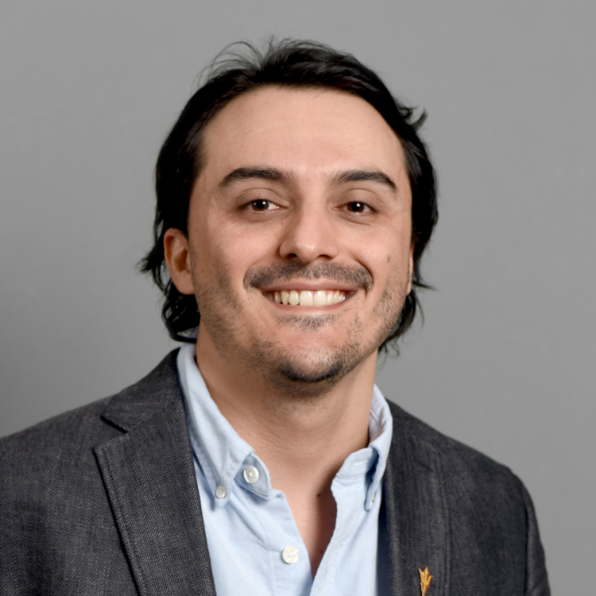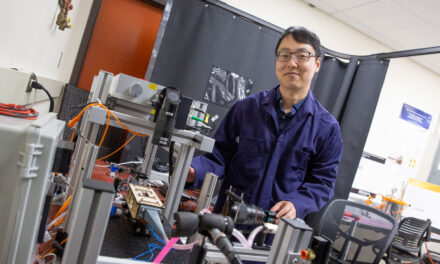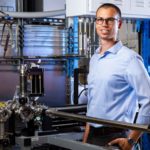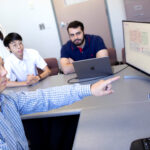
Sustainable by design
ASU’s Jorge Sefair recognized for research to make nature preserves more effective

Above: Arizona State University Assistant Professor Jorge Sefair is developing new data tools to better inform decisions about the design of conservation areas. The goal is to augment habitat and species sustainability both immediately and over the longer term. Sefair's work has been recognized with a $500,000, five-year National Science Foundation Faculty Early Career Development Program (CAREER) Award. Photo courtesy of Shutterstock
Nine faculty members in the Ira A. Fulton Schools of Engineering at Arizona State University have received NSF CAREER Awards in 2021.
Conversations about conservation often focus on national parks and wildlife refuges. These high-profile habitats are broadly valued as venues for outdoor recreation and gleeful glimpses of popular flora and fauna.
But decades of agricultural, industrial and residential development mean that nature’s network of wild spaces is diminishing, and remaining parcels of land play incrementally greater roles in the delicate balance of environmental sustainability.
“They operate as components within larger ecological systems that we all depend on,” says Jorge Sefair, an assistant professor of industrial and systems engineering in the Ira A. Fulton Schools of Engineering at Arizona State University. “This means effective preservation has implications for the security of our water supply, our food supply and other vital resources.”

Jorge Sefair
Even so, conservation advocates struggle to establish new preserves or expand existing ones. Funding and political support can be insufficient to spare these spaces from a vast number of alternative uses. Plus, the ability to gather, analyze and relay relevant data as compelling arguments for preservation represents an enormous challenge.
“The analytical tools available right now are limited. They incorporate only a subset of the parameters that need to be considered,” Sefair says. “Also, nothing offers real data visualization, which is important for the decision-making that needs to happen.”
Addressing this gap is the focus of innovative research that Sefair is conducting at the School of Computing, Informatics, and Decision Systems Engineering, one of the six Fulton Schools. His efforts have earned a 2021 National Science Foundation Faculty Early Career Development Program (CAREER) Award.
CAREER Award recognition is reserved for young researchers who show the potential to be academic role models and advance the missions of their organizations. Awardees receive approximately half a million dollars over five years to further their highlighted research.
For Sefair, this support means he can apply new models and specialized algorithms to develop tools that enable more informed decisions around conservation design and effective land use. The overall goal is to augment habitat and species sustainability both immediately and over the longer term.
Nature preserves are counterintuitively artificial spaces. The resident species are wild, but the actual parcels are demarcated by people. The act of protecting water, plants and animals amid encroaching human development means identifying boundaries, which is a complicated exercise.
“Designing these spaces can be very difficult,” Sefair says. “Protecting key resources or threatened species could, for example, call for multiple compact spaces connected by a series of corridors rather than one big plot of land that is closed to other uses.”
But configuring corridors to link fragmented habitats around agricultural land or urban sprawl is a complex challenge. If they are too narrow, there is a good chance that animals will wander outside of the protected land and be hunted or killed in traffic.
“Alternatively, what happens to the proposed design for a preserve if we switch the species we want to protect?” Sefair says. “Or what happens if the problem we want to solve cannot be addressed for several years? Will the proposal still work for its intended purpose? So, there is real need for mathematical and algorithmic development to answer these kinds of questions.”
The complex nature of this work also demands domain expertise beyond Sefair’s own as an industrial engineer specializing in network optimization. Consequently, he is collaborating with research peers at ASU’s Center for Biodiversity Outcomes as well as with conservation ecology colleagues at the University of Florida and nongovernmental organizations that advocate for environmental issues.
Alongside data tool development, Sefair says it is crucial for this project to incorporate educational outreach. He believes new generations of engineers should have access to training and opportunities that engage them in transdisciplinary environmental research.
“Fundamentally, we need to raise awareness of the ecological challenges we face right now,” he says. “And, for me, that starts with my students. But even high schoolers and middle schoolers should understand society’s impact on nature and the benefits of conserving natural systems. This issue is about everyone.”
Such an encompassing philosophy is part of the reason Sefair joined ASU in 2015.
“People of all backgrounds and talents are truly welcome here, and that inclusiveness is something I appreciate,” he says. “Also, the very intentional application of research to improve our world is something I value. The Fulton Schools and ASU as a whole are enterprises that foster success in this broadest sense.”



































